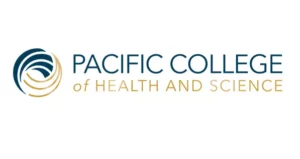The American Hospital Association conducted a survey in 2006 that revealed that more than one out of every four hospitals in the U.S. now offer some “alternative” therapies, including acupuncture, traditional Chinese medicine, homeopathy, and massage therapy, among other types of non-Western treatment. According to the survey, which is conducted every year by the AHA, the percentage of hospitals offering “complementary and alternative medicine” (CAM) therapies grew from 8 percent in 1998 to 27 percent in 2005.
More Americans are finding relief through alternative forms of health care. Hospitals have increasingly expanded programs in order to attract this patient base as well as to optimize care options. CAM (Complementary and Alternative Medicine) inpatient programs nearly doubled between 1998 and 2001, as attitudes and perceptions toward alternative medicine change. The Journal of the American Medical Association states that 42 percent of U.S. adults receive at least one of sixteen alternative therapies surveyed.
Top CAM Therapies and Financial Implications
The top six therapies offered by the AHA member hospitals and sought by Americans include massage therapy, tai chi, yoga, or qi gong, relaxation trainings, acupuncture, guided imagery, and therapeutic touch. Studies showed that Americans paid for most of these services out of pocket, spending $13.7 billion annually on CAM products and services, making it an attractive market for many struggling hospitals. In a 2002 Health Forum report, most hospitals cited patient demand as the number one reason for implementing CAM programs. Other reasons included clinical effectiveness, reflection of the organizational mission and competition with other hospitals. By offering a wider range of treatment choices to patients, hospitals may gain a competitive edge.
If you think a career in holistic medicine is something you would like to pursue, contact us and speak to an admissions representative to get started on your new journey!
Challenges and Future Directions for CAM in Healthcare Settings
Physician resistance is the number one reason why hospitals do not opt for CAM services, a trend that is likely to change, as 60 percent of medical schools now offer CAM courses, and efforts by schools such as Pacific College of Oriental Medicine are making strides to expand knowledge of traditional medicine.
Three quarters of hospitals offering CAM services reported program start up costs as less than $200,000, according to AHA’s Annual Survey. Numerous services are offered with such minimal costs. These include, but are not limited to: acupuncture, acupressure, massage therapy, pastoral care, herbal medicine, reflexology and biofeedback.
Hospitals will continue to begin CAM programs as they review new research that validates efficacy, educate physicians and hire licensed professionals.
Featured Posts:

